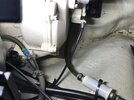Titaniumboy
Active Member
I have a bone stock 1996 GTX except for a boarding ladder and a mat kit. The ski has maybe 110 hours, but has not run since 2015. An independent shop removed the carbs, cleaned and replaced the diaphragms, and cleaned the internal filters back in 2010.
Before firing this puppy up, I want to replace the original Tempo gray fuel lines.
I think I need the following:
20 feet of 1/4” fuel line
5 feet of 5/16” fuel line
1 fuel selector switch
1 clear Fram G2 fuel filter
Appropriate SS clamps (already have an Oetiker plier)
Is this kit from eBay seller brynhard worth considering?
Sea-doo 96 97 GTX GTI full tune up overhaul kit fuel / oil lines gaskets carbs | eBay
Thanks for any thought or ideas.
Before firing this puppy up, I want to replace the original Tempo gray fuel lines.
I think I need the following:
20 feet of 1/4” fuel line
5 feet of 5/16” fuel line
1 fuel selector switch
1 clear Fram G2 fuel filter
Appropriate SS clamps (already have an Oetiker plier)
Is this kit from eBay seller brynhard worth considering?
Sea-doo 96 97 GTX GTI full tune up overhaul kit fuel / oil lines gaskets carbs | eBay
Thanks for any thought or ideas.
This site contains eBay affiliate links for which Sea-Doo Forum may be compensated.





